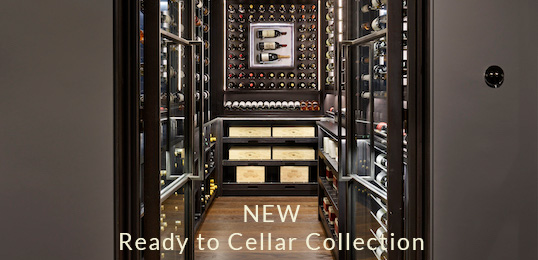2010 in Burgundy fell into the latter camp. I was there at the time and the prognosis was not good. When winemakers in France’s most complex region start talking about “une année technique”, or a technical year, you know they’re worried. If 2009 was a vintage that almost made itself, an armchair ride for vignerons, 2010 was one in which they had to work a whole lot harder.
The elements – always a fickle friend in this northerly, marginal area – misbehaved in 2010. The crop was small because of cold weather during the flowering of the vines in late May and early June and summer, as anyone who went on holiday to France that year will recall, was cool and often wet. September was warmer, but this was a mixed blessing. On the one hand, it helped to ripen the grapes, but in places the humidity led to grey rot, which is very damaging to red wine quality in particular. So… headaches all round.
But the Burgundians are a resourceful bunch. More to the point, many of them now use sorting tables in their cellars, which enable them to pick out unripe or rotten berries and leave them on the ground, something that wouldn’t have happened even 20 years ago. Sometimes it was a matter of picking individual berries from their stems: hands on winemaking if ever there was. Many producers reduced their crops by 40% to get rid of poor quality grapes.
For all that, they were still surprised by the quality of the vintage. As Aubert de Villaine, the director of Burgundy’s most celebrated estate, Domaine de la Romanée-Conti, put it: “Rarely has a vintage been so close to the precipice and then managed to save itself so successfully.” It wasn’t quite a miracle – picking dates, those sorting tables and skilful winemaking all played their part – but it wasn’t far off. Suddenly, the Burgundians were smiling again.
This might not be a legendary vintage, like 2005 and 1999, but it is a very good one. 2010 is less homogenous than 2009, but its best wines are superior in my view: fresher, lighter and more harmonious. The Burgundians like to refer to them as “ethereal” and “terroir wines” in the sense that they reflect their origin more faithfully than the 2009s. The gap between the Grands Crus (the region’s elite vineyards) and the rest was greater in 2010. In 2009, it was difficult to make bad wine; in 2010, you needed good sites and no little talent.
This has been reflected in the prices, to a certain extent, which are up 10-15% on 2009, although this can partly be explained by those reduced yields. If the 2009s were all about immediate pleasure and softer, almost New World-style aromas and flavours, the 2010s are more cerebral, long-term wines. That doesn’t’ mean they aren’t pleasurable – they are some of the finest I’ve tasted in my 27 years as a wine writer – but their charms are subtler.
You should still choose carefully in 2010, particularly where the white wines are concerned. There was a storm in the Côte de Beaune on September 12th, which affected the villages of Puligny-Montrachet and Chassagne-Montrachet and growers needed to pick quickly to prevent the subsequent wines going brown: what the Burgundians call “turning to chocolate”. There were also problems with rot, especially when producers, négociants or co-operatives didn’t have the means or employees to use sorting tables.
That said, there are some fantastic 2010s. The pick of the white wine villages are Meursault and Chablis, while Gevrey-Chambertin, Vosne-Romanée, Beaune and Pommard were the leading red communes. But almost everywhere in Burgundy made some good wines, even at basic generic level, where you would have expected producers to struggle.
Many of the best wines from domains such as Armand Rousseau, Comte Liger-Belair and Sylvain Cathiard have already sold out (they are on allocation any way), but there are still parcels of very tasty wines available from specialist merchants (see my list at the end of this article). If you bought Burgundy in 2009, as well as Bordeaux in 2009 and 2010, you might be tempted to skip the 2010s but I would strongly advise you to buy them. The region has not had two such great, if contrasting, back-to-back vintages in a long time.
These are not wines that will need to be cellared for ages, like the 2005 reds, which are still not ready to drink, but they will still reward patience. The fruit is fresh and forward, but there’s enough structure in the best reds to suggest that they will develop for five to ten years. The whites, too, have enough acidity to keep for five years or more, unlike the 2009s, which are much more immediate.
It didn’t look like it at the time, but 2010 turned out all right in the end. The Burgundians aren’t the only people who should be smiling.
RECOMMENDED PRODUCERS
Clos de Tart, Comte de Vogüé, François Bertheau, Jean-Marc Boillot, Sylvain Cathiard, Comte Armand, Confuron-Cotetidot, Comte Liger-Belair, Duroché, Jean-Philippe Fichet, Fontaine-Gagnard, Jean Grivot, Fourrier, Robert Groffier, François Lamarche, Leflaive, de Montille, Denis Mortet, Michel Niellon, Domaine de la Romanée-Conti, Rossignol-Trapet, Roulot, Armand Rousseau, Etienne Sauzet, Domaine de la Vougeraie.
RECOMMENDED UK MERCHANTS
Armit, Bordeaux Index, Berry Brothers, Clark Foyster, Corney & Barrow, Flint Wines, Goedhuis, Handford, Howard Ripley, Jeroboams, Justerini & Brooks, Lea & Sandeman, Lay & Wheeler, Montrachet, OW Loeb, Private Cellar.
For extensive tasting notes, download my report on the 2010 vintage for £10 from www.timatkin.com/reports.
Photography by Tim Atkin Photography


